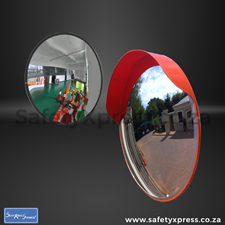Top 7 tips when using safety products



Safety products can help you to ensure your safety while you are working in an industrial environment. It is essential for the people who manage industrial facilities to buy and provide appropriate safety equipment for the people who are in need. However, you will also need to learn how to use these safety products in the right way. Otherwise, it will not be possible for you to get the maximum level of protection offered by them. Here are some of the best tips that you will need to keep in mind while you are using safety products.
Make sure that you don’t ignore blind spots
One of the main objectives of using safety products is to overcome the risks associated with blind spots. Hence, you should learn how to position the safety products accordingly. When operating heavy machinery, operators must be very certain that no one is behind them or in their blind zones, even if that means stepping off of the machine and inspecting. If your vision is limited, have a spotter guide and direct you from a safe, visible location. Make sure individuals working around you for the day are aware of your blind spots and that they make eye contact with you before approaching the equipment. On all locations, high-visibility vests are required.
Maintain continual communication with those that work with you. The optimum mode of communication is a two-way radio; if it is not available, utilize hand signals from a spotter who has been adequately trained. Every safety meeting should include a discussion of communication with operators, which should be reinforced by the foreman on site.
Use seatbelts at all times
Seatbelts are just as critical in heavy machinery as they are in a moving car. There is no justification for not wearing it at all times except laziness. It will not only save your life in the event of a rollover, but it will also hold you securely in your seat when driving on difficult terrain, saving energy, and minimizing near calls at the end of the day.
Installation and deinstallation of safety equipment accordingly
OSHA and other safety organizations have identified falls and stepping on and off as two of the most common causes of harm. This involves entering and departing a machine’s cab. When going on or off your equipment, it’s a good rule of thumb to keep three points of contact. Never take a leap of faith. Remember that the three-point rule dictates that three of four points of contact with the vehicle be maintained at all times—two hands and one foot, or both feet and one hand. Replace any broken handholds or steps; it might save you from a catastrophic injury down the road.
Get appropriate safety equipment for loading and unloading
When loading or unloading your equipment, make sure you’re on level ground. Rollovers and sliding down the low-bed ramps are considerably reduced. If you’re unloading on a busy construction site or in a high-traffic area, make sure everyone is out of the way and hire a spotter to help you out.
Don’t ignore the dangers from above and below
All overhead impediments, such as power lines and poor clearance, should be identified and reported before work begins on any construction site. Seek expert assistance to ensure that underground facilities such as water, sewage, gas, and electricity are found and marked with color-coded paint and flags by the relevant department. When approaching the subterranean utility, be cautious and manually dig to reveal it. If you’re going to leave holes for employees or the general public to fall into, make sure there are barriers and snow fencing in place.
According to OSHA, employers must teach employees and implement processes to guarantee that before any employee performs service or maintenance on a machine that might cause damage due to an unexpected start-up or release of stored energy, the equipment or energy source must be made inoperative. Pinch points, attachments, and elevated weights are all examples of risks. To avoid any mishaps, picture warnings, locks, and tags should be utilized.
Be mindful on how to use safety equipment
Before you start using safety equipment, you should carefully go through them and understand how you can start using them. This will help you to overcome most problems that would come on your way.
When running various machines during the day, be mindful of the load restrictions of each one. The load limitations might vary dramatically depending on the equipment set-up and size. When using a machine to lift anything, make sure loads are secured with the necessary rigging attachments, and examine them regularly to verify they are in excellent operating order. When lifting and moving weights, check that all employees are at a safe distance, as with most machinery operations.
Be mindful about your surroundings
Before using the equipment, it should be examined at least once a day. This entails strolling around with a pre-made component checklist to ensure everything is in working condition. Hydraulic hoses, undercarriage, oil levels, stress points, and other components must all be inspected and reported to the maintenance/safety department before the machine may be started. When doing a work like this, using a cloud-based mobile device may considerably enhance communication and reaction time between the operator and the technician.
Even for a seasoned veteran, operating heavy machinery may be a difficult profession at times. Regardless of your instructions, never place yourself in a situation where you are uncomfortable. If you’re unsure about operating on a slope or near dangers, get out of the cab and take a look around. Staying calm and awake throughout the day can help you be more productive and create a great working atmosphere for others.
Final words
Now you know how to use safety products and ensure your safety in the long run. Adhere to these tips and you will never end up with disappointment.



